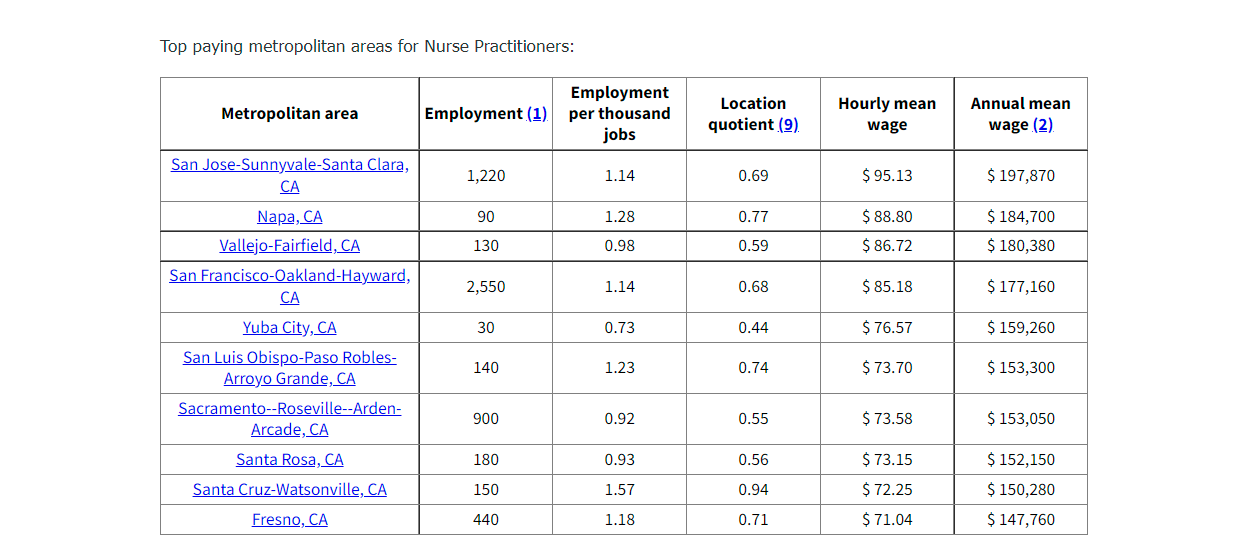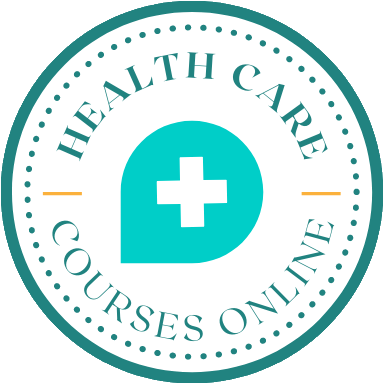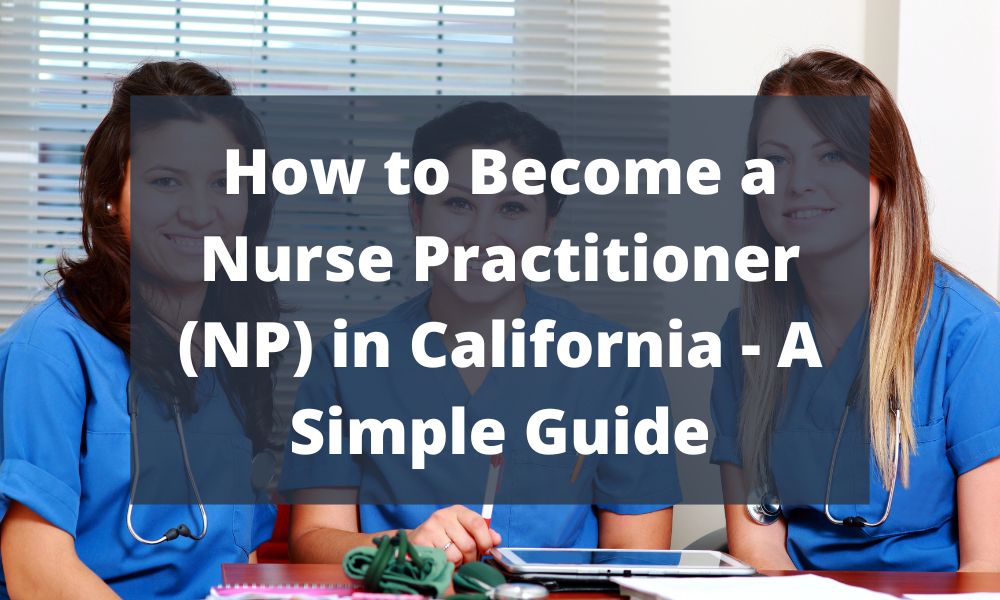Are you looking to advance your nursing career by becoming a certified Nurse Practitioner (NP)?
That’s a great!
Nurse practitioners play a crucial role in the healthcare team and are in great demand in California.
If you choose to become one, you can expand your nursing practice and deliver more advanced patient care… not to mention becoming one of the highest-paid healthcare professionals in the country!
But the question is…
How exactly do you become one?
There just seem to be so many requirements and hurdles, right?
Every goal worth achieving requires time and effort… but with the proper guidance, your chances of making it are much greater!
And that’s precisely what we’re here for!
We’re going to give you a simple guide on how to become a nurse practitioner (NP) in California in just 4 steps.
We’ll also answer FAQs that you may need or want to know as you venture on this journey, such as:
- What is the difference between a nurse practitioner and a clinical nurse specialist?
- How long does it take to become a nurse practitioner?
- How much does a nurse practitioner earn in California?
- Which California cities have the highest pay for nurse practitioners?
If you’re all set, let’s dive into the details!
How to Become a Nurse Practitioner (NP) in California – 4 Simple Steps
Here are the 4 steps to becoming a nurse practitioner in California:
- Become a Registered Nurse (RN) in California
- Complete a Postgraduate Degree in Nursing
- Apply for Your Certified Nurse Practitioner (CNP) License in California
- Keep Your CNP License Active
These may seem too much to handle, but if you take it one step at a time, you’ll get there!
Let’s discuss each step.
How to Become a Nurse Practitioner (NP) in California Step #1: Become a Registered Nurse (RN) in California
Before you can become a nurse practitioner, you first have to become a registered nurse (RN) in California.
You can read a full article on how to become an RN in California here, but we will give you some of the important points in this article.
Enroll in an Approved RN Program
First of all, you will need to enroll in an RN program approved by the California Board of Registered Nursing. This is to ensure that you get the proper training and skills to become an RN.
There are two programs you can choose from – Associate Degree in Nursing (ADN) and Bachelor of Science in Nursing (BSN).
Although both are legitimate programs for you to become an RN, we suggest that you take a BSN if you are planning to become a nurse practitioner in the future.
This is because postgraduate programs (master’s or doctorate) usually require a BSN for your undergraduate nursing education.
However, if you graduate as an ADN, you still have other options to become a nurse practitioner. You can choose to take an RN to BSN bridge program or an RN to MSN program.
But if you want a more straightforward and efficient path to becoming a nurse practitioner, taking a BSN from the get-go would be your best option.
Apply for a State License through Examination or Endorsement
After you graduate, you need to apply for a California RN license.
If you are a fresh graduate, then you will need to apply through the examination process.
This means that you will need to take the NCLEX-RN exam, pass a criminal background check, and pay an application fee before you can be given an RN license.
On the other hand, if you are already an RN in another state, you can apply for a California license through the endorsement process.
This means that you will need to show proof of an active RN license from your state of origin, pass a criminal background check, and pay an endorsement fee.
Get your License and Keep it Active
Once you have your license, you can start looking for your first RN job!
This is the perfect time to gain more experience in a real-life setting. As you practice in different areas of nursing, you will eventually find out what field you are most interested to specialize in.
Most graduate schools also prefer that you have at least one year of work experience before you enroll.
As you continue your practice, don’t forget to renew your license every two years by completing the necessary hours of continuing education.
How to Become a Nurse Practitioner (NP) in California Step #2: Complete a Postgraduate Degree in Nursing
Once you become an RN and gain some experience, you can proceed to a postgraduate degree in nursing.
The program you choose to enroll in will depend on what you want to specialize in.
At this point, it would be good to remember that there are other kinds of advanced practice registered nurses (APRNs) in California, such as nurse anesthetists (NA), nurse-midwives (NMW), and clinical nurse specialists (CNS). There are also psychiatric/mental health nurses (PMH) and public health nurses (PHN).
Nurse practitioners are APRNs that focus primarily on direct patient care. They evaluate their patient’s health, create patient care plans, coordinate patient care, and provide direct patient care.
They can also apply for a furnishing number, allowing them to prescribe medications.
Choosing a Specific NP Program
When choosing a postgraduate degree, NPs can specify what categories they want to focus on, such as:
- Family/individual across the lifespan;
- Adult-gerontology: primary care or acute care;
- Neonatal;
- Pediatrics: primary care or acute care;
- Women’s health/gender-related;
- Psychiatric-Mental Health across the lifespan.
Here are some of the specific postgraduate programs you can choose from in California:
- Family Nurse Practitioner
- Family Primary Care Nurse Practitioner
- Family Psychiatric Mental Health Nurse Practitioner
- Family Emergency Care Nurse Practitioner
- Neonatal Nurse Practitioner
- Pediatric Nurse Practitioner
- Pediatric Primary Care Nurse Practitioner
- Pediatric Acute Care Nurse Practitioner
- Pediatric Nurse Practitioner Dual Primary and Acute Care
- Pediatric and Adult Primary Nurse Practitioner
- Adult-Gerontology Acute Care Nurse Practitioner
- Adult-Gerontology Primary Care Nurse Practitioner
- Adult-Gerontology Primary and Acute Nurse Practitioner
- Dual Adult and Gero Nurse Practitioner
- Adult-Gerontology Occupational and Environmental Health Nurse Practitioner
- Psych/Mental Health Nurse Practitioner
- Women’s Health Nurse Practitioner
Approved NP Programs
Whatever you choose, make sure to enroll in a program that is approved by the California Board of Registered Nursing (BRN) and has met the Board’s “Standards of Education for Nurse Practitioner Programs” (California Code of Regulations Section 1484).
This will make things a lot easier for you in the future.
Here is a list of approved programs in California, as well as approved programs outside of California.
Coursework and Clinical Experience
Your coursework will vary depending on your specialization, but you can expect core courses such as advanced pharmacology and advanced pathophysiology.
You will also be expected to undergo at least 500 clinical hours of supervised direct patient care experiences. Additional clinical hours may be required by your program curriculum.
Enrollment Requirements
Different schools will have different requirements for enrollment, but you can generally expect to be asked for the following:
- your BSN degree GPA
- evidence of licensure as an RN
- a Graduate Record Examination (GRE) score
- your resume
- letters of recommendation
- work experience as an RN
Make sure to check with the specific school that you are interested in.
How to Become a Nurse Practitioner in California Step #3: Apply for Your Certified Nurse Practitioner (CNP) License in California
When you complete your postgraduate degree, the next step is to get your NP license from the California BRN.
There are 3 methods to qualify for a license.
- Graduate from an Approved California-Based Nurse Practitioner Education Program
- Graduate from an Approved Non-California Based Nurse Practitioner Education Program and Get National Certification
- Graduate from an Unapproved Nurse Practitioner Education Program and Prove Equivalency
Let’s discuss each method.
Method 1: Graduate from an Approved California-Based Nurse Practitioner Education Program
This is the most straightforward path for you.
If you graduate from an approved California NP program, all you need to do is:
- Complete an Online Application for Nurse Practitioner (NP) Certification and pay the applicable fee.
- Complete a Verification of Nurse Practitioner Academic Program form submitted by your nurse practitioner academic program.
- Send an official, sealed transcript showing evidence of your date of graduation or post-graduation from your nurse practitioner program.
Method 2: Graduate from an Approved Non-California Based Nurse Practitioner Education Program and Get National Certification
If you took your NP program outside of California but it is an approved out-of-state NP program, then this method is for you.
To qualify using this method, you need to:
- Complete an Online Application for Nurse Practitioner (NP) Certification and pay the applicable fee.
- Complete a Verification of Nurse Practitioner Academic Program form submitted by your nurse practitioner academic program.
- Complete a Verification of Nurse Practitioner Certification by a National Organization/Association form submitted by the respective organization.
- Send an official, sealed transcript showing evidence of your date of graduation or post-graduation from your nurse practitioner program.
The following national organizations/associations have met the BRN’s standards for NP certification:
- American Academy of Nurse Practitioners Certification Board (AANPCB)
- American Nurses Credentialing Center (ANCC)
- Pediatric Nursing Certification Board (PNCB)
- National Certification Corporation (NCC
- American Association of Critical-Care Nurses (AACN)
You need to check with each specific organization for their certification requirements.
Method 3: Graduate from an Unapproved Nurse Practitioner Education Program and Prove Equivalency
If you graduated from an NP program that has not been approved by the California BRN, then you will need to submit more documents to prove equivalency to the standards of the Board.
To qualify using this method, you need to:
- Complete an Online Application for Nurse Practitioner (NP) Certification and pay the applicable fee.
- Complete a Verification of Nurse Practitioner Academic Program form submitted by your nurse practitioner academic program.
- Complete a Verification of “Clinical Competency” as a Nurse Practitioner form submitted by a nurse practitioner.
- Complete a Verification of “Clinical Competency” as a Nurse Practitioner form submitted by a physician.
- Complete a Verification of “Clinical Experience” as a Nurse Practitioner form submitted by the physician and/or nurse practitioner.
- Pass an official, sealed transcript showing evidence of your date of graduation or post-graduation from your nurse practitioner program.
- Submit the curriculum and course descriptions for your completed academic program for the time you attended.
- Note: The Board may request additional documents regarding your educational program.
Furnishing Number
Applying for a furnishing number will allow you to prescribe medications to your patients.
To do this, you need to submit both the nurse practitioner and nurse practitioner with furnishing number applications.
Forms and Fee Schedule
You can find the forms for all three methods here, as well as the form to apply for a furnishing number.
All documents should be sent directly to the California Board of Registered Nursing.
The fee to apply as a nurse practitioner is $500, with an additional $400 for a furnishing number.
How to Become a Nurse Practitioner (NP) in California Step #4: Keep Your CNP License Active
Getting your CNP license is the start of a new journey for you.
You will have a lot of work opportunities, with a higher salary grade… and you’ll get to work in your specific field of interest!
But this is not the end of the road for you.
You will still need to keep both your RN and NP license active throughout the years.
To renew your RN license, you need to have 30 contact hours of continuing education every two years, and pay a renewal fee of $190.
Your NP license is to be renewed at the same time as your RN license. The renewal fee is $150.
If you have a furnishing number, the renewal fee is an additional $172.
We wish you all the best on your journey as a Nurse Practitioner in California!
Frequently Asked Questions about Becoming an NP in California
Now that we’ve discussed the 4 steps to becoming a Nurse Practitioner, it’s time to answer some questions that you might be curious about.
What is the difference between a Nurse Practitioner and a Clinical Nurse Specialist?
Before we talk about the differences, let’s discuss their similarities.
Both are Registered Nurses who have pursued advanced practice, otherwise known as Advanced Practice Registered Nurses (APRNs).
The practice of both Clinical Nurse Specialists and Nurse Practitioners may overlap, because they are both qualified to assess, plan, and provide direct healthcare to their patients. Both groups can also provide leadership and education in their settings.
However, both groups differ in terms of the focus of their practice. NPs tend to focus on the intricacies of direct patient care, while CNS tend to focus on administration, research, and program development.
How long does it take to become a Nurse Practitioner?
This is not an easy question to answer, because it depends on where you are right now in your career, and what path you want to take to achieve your goal.
Remember that it can take about 4 years (or more) to gain your BSN-RN license.
You then need to prepare for and pass the NCLEX-RN exam.
It is best for you to then gain at least 1 year of work experience as an RN before you enroll in a postgraduate NP program.
Depending on your specialization and pace, it can take 2-5 years for you to complete your postgraduate degree, including the necessary clinical experience.
If you are seeking national certification, you may need to complete other requirements as well.
The time, effort, and expense may seem daunting, but you can choose to take it slow. The rewards are also fulfilling.
How much does a Nurse Practitioner earn in California?
Good news! California is the top paying state for Nurse Practitioners.
According to the US Bureau of Labor Statistics, the annual mean wage for an NP in California is $151, 830.

Which California cities have the highest pay for Nurse Practitioners?
The top paying metropolitan areas for nurse practitioners are all in California, with San Jose, Sunnyvale, and Santa Clara as the highest on the list!

In Summary
And here we are!
We’ve discussed everything you need to know to become a Nurse Practitioner in California, starting from becoming an RN to keeping your NP license active.
We know that there are different paths to becoming an NP, but we’ve given you a guide to make sure you get there.
We also saw that California is the highest paying state for nurse practitioners!
With all this information, we hope you are better equipped to start your NP journey.
We wish you all the best!

